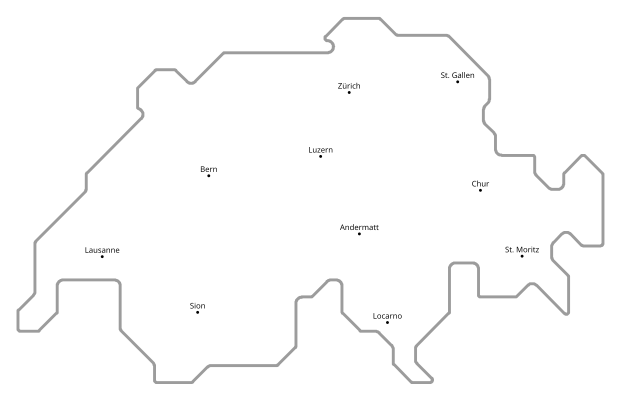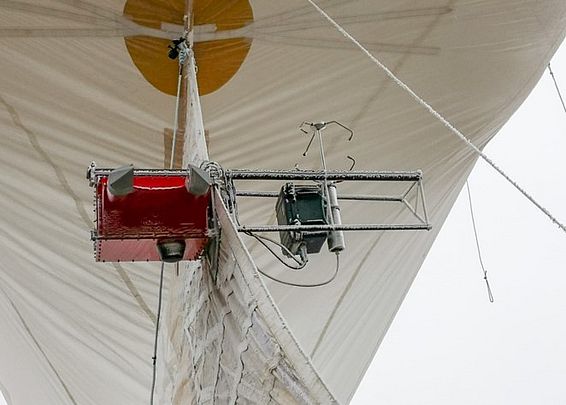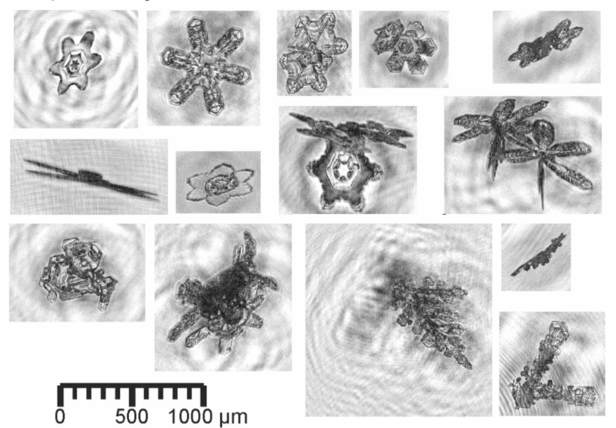06.02.2019 | News SLF
This week at Davos Wolfgang, a two-month scientific measurement campaign using a captive balloon and other equipment gets under way. The researchers are hoping that the results will enhance their understanding of the mechanisms that give rise to precipitation in the mountains.
By coordinating measurements relating to the formation of precipitation in clouds on the one hand, and data on the depositing of snow on the ground on the other, the researchers are seeking to improve precipitation forecasts for mountain regions. “Our measurement campaign seeks to intensively integrate cloud and snow research for the first time,” explains Michael Lehning of the WSL Institute for Snow and Avalanche Research SLF and the Ecole polytechnique fédérale de Lausanne (EPFL). The captive balloon belonging to the Institute of Atmospheric and Climate Science at ETH Zurich, which is being deployed in the mountains for the first time, has a diameter of 8 metres and can ascend to a height of 800 metres above the ground. It is equipped with a variety of measuring instruments to investigate the physical processes as they occur within clouds. These include a holographic imaging system that captures individual precipitation particles. These images allow the researchers to measure the size distribution of the particles, and determine whether they are liquid droplets or tiny ice crystals.
The balloon measurements are to be supplemented by data collected by several other research institutions. MeteoSwiss and the Leibniz Institute for Tropospheric Research (TROPOS) in Germany, for example, are installing several remote sensing systems on the Wolfgang Pass. On the Weissfluhjoch, ETH Zurich, the University of Basel and the EPFL will be analysing the air and the ice crystals in the clouds. The clouds will also be measured by devices mounted on the roof of a car operating on the Gotschna cable car. In order to link the cloud processes to the distribution of snow on the ground, the research team have to generate snow transport estimates as well. The snow processes research group of the SLF, which specialises in such measurements, has developed a measuring station specifically for this purpose and is deploying it on the Gotschnagrat.
The researchers are additionally using data collected by existing measuring stations, including the SLF sites in Davos Laret and on the Weissfluhjoch, as well as the MeteoSwiss precipitation radar on the summit of the Weissfluh. Research team leader Jan Henneberger of ETH Zurich, comments, “Davos offers an unparalleled density of measured data relating to snow and the atmosphere.” It is hoped that a more precise understanding of the type of snow crystals that reach the ground will help to improve precipitation forecasts, which are key input sources for snowpack models. These are used by the SLF to facilitate an assessment of natural hazards, such as avalanches and flooding, and to produce forecasts for winter sport resorts and hydropower plant operators.
Contact
Dr. Jan Henneberger
ETH Zürich
Institut für Atmosphäre und Klima IAC
jan.henneberger(at)env.ethz.ch
+41 79 244 28 12
Zürich
Links
Copyright
WSL and SLF provide image and sound material free of charge for use in the context of press contributions in connection with this media release. The transfer of this material to image, sound and/or video databases and the sale of the material by third parties are not permitted.


